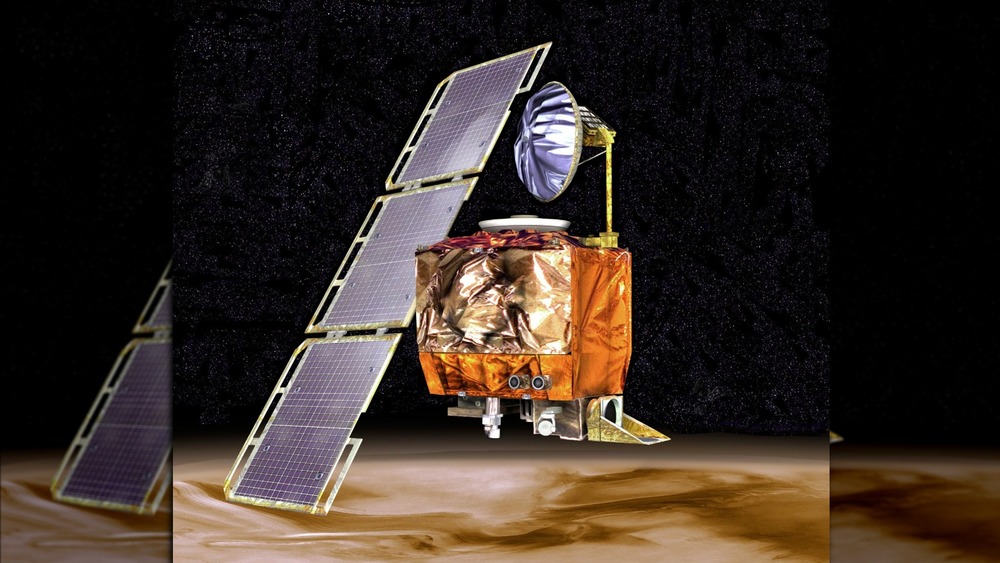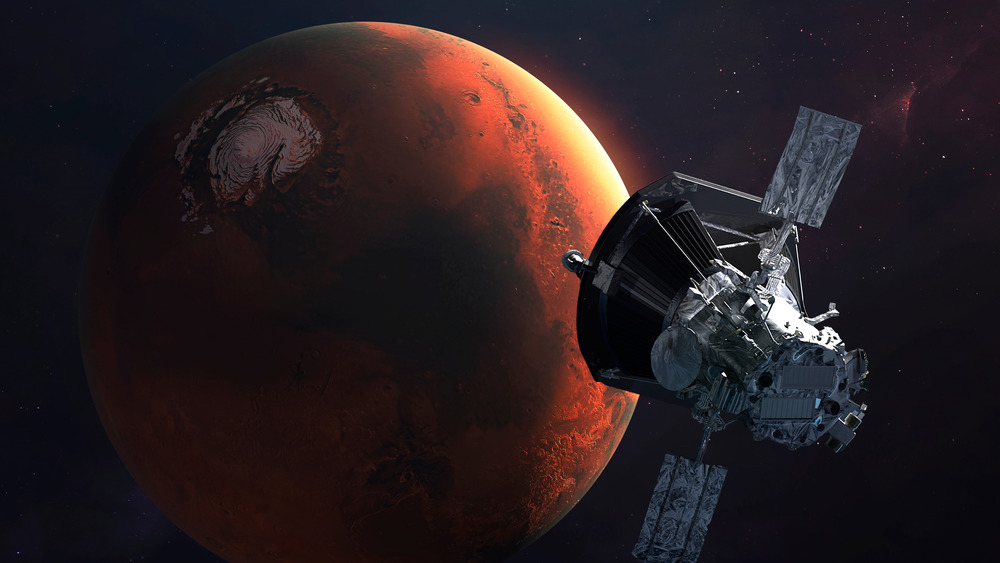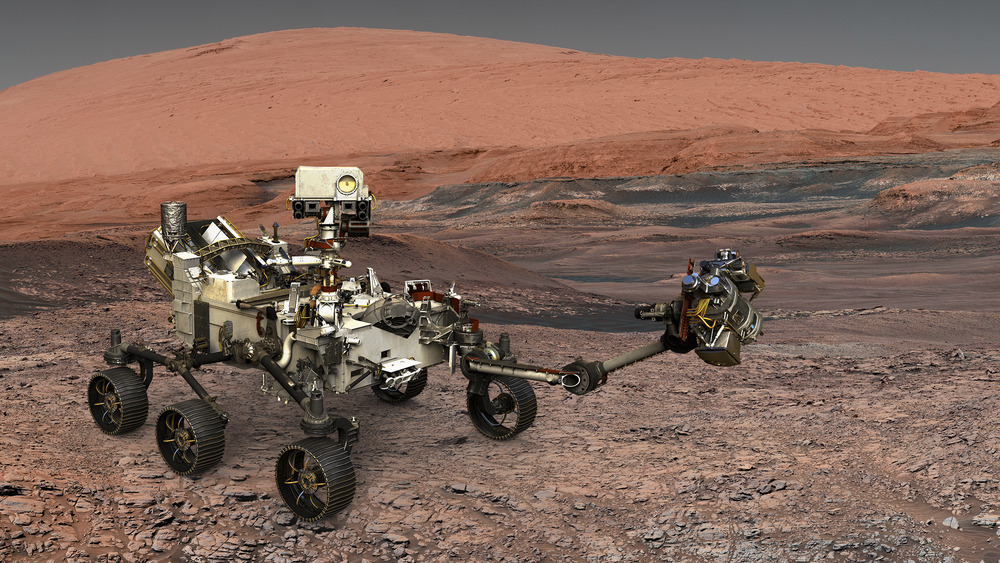The Reason NASA Lost A Super Expensive Satellite
For a bunch of geniuses, the folks over at NASA sure have made some pretty boneheaded mistakes in the administration's more than six decades of space exploration. There was the time the administration teamed up with the Air Force on a foolhardy plot to nuke the moon just to show off to Russia. And the time they ignored engineer Roger Boisjoly about the faulty O-rings on the Challenger, which tragically exploded just after takeoff, killing all seven astronauts on board. Then at the end of the 20th century, when NASA was getting really ambitious with its plans to explore Mars, it launched a pair of spacecraft that were unfortunately doomed from the get-go, and would end up costing the administration (i.e., the taxpayers) quite the pretty penny.
According to NASA, The Mars Climate Orbiter was designed to orbit the red planet and observe its climate and weather patterns. It was supposed to work in conjunction with the Mars Polar Lander, communicating with the other robot on the ground to make the most detailed observations of the Martian atmosphere to date. But tragically, by December 1999, both orbiter and lander had been torn to smithereens, and NASA was forced to take a good, hard look at itself in the mirror. At the dawn of the 21st century, the administration decided to completely revamp its approach to exploring Mars, scrapping other ambitious missions and getting back to basics.
A careless assumption cost NASA its super expensive satellite
As Wired tells it, the eggheads at NASA achieved the absolutely incredible feat of getting the Mars Climate Orbiter — what was supposed to be humanity's first weather satellite on another world — out of Earth's orbit and all the way to Mars. They had done all the calculations necessary to get it to transfer from interplanetary space into orbit around the Red Planet. But on September 23, the orbiter disappeared. Richard Cook, the Mars exploration projects manager at the time, said that the orbiter had flown too low. It "more or less hit the top of the atmosphere and burned up." So what caused such a tragic loss, after all that math, manpower, and money had been thrown at the enterprise?
A review of the incident found that after doing all those calculations correctly, the NASA scientists had forgotten to make sure that all the various systems involved were speaking the same measurement language. One piece of software told another piece of software to calculate the force of the thrusters in pounds, but the other one received the data in metric unit newtons. A pound of force is equivalent to about 4.45 newtons, so the poor orbiter was shot straight down into the planet's atmosphere, and the friction tore it to pieces. NASA engineers had apparently assumed that the Lockheed Martin engineers who built the craft had already converted its calculations to metric units, and the blockheaded mistake wrecked the entire mission.
Once again, NASA had ignored the warning signs
The Mars Climate Orbiter had given the NASA engineers a not insignificant number of warning signs before it reached the Red Planet, but still nothing was done to correct the problem. During its journey to Mars, the craft was forced to make up to 14 times more minor adjustments than the engineers had expected it would. And the final signals from the orbiter told them it was going dangerously lower than it should have. Still, no one thought to check the conversions. And just two days before the orbiter disappeared, The New York Times had published an article titled "Beginning a Bargain-Basement Invasion of Mars" that detailed systemic problems in the program and predicted such disasters in its future. Cook told Wired that NASA's mantra at the time was "Better, faster, cheaper." But in the end, "cheaper" would end up meaning "more expensive." According to NASA's press kit for the mission, the Mars Climate Orbiter and Polar Lander project cost almost a half a billion dollars. (The Polar Lander plummeted from the Martian sky after its legs misconstrued vibrations as signs that it had already landed.)
The disasters would cause NASA to completely rethink its Mars exploration program, reverting to more conservative ideas that had been tested previously. And luckily, this time, it worked. The Mars Exploration Rovers exceeded all expectations, outliving their expected 90-day lifetimes by several years and yielding a wealth of new information about the planet.


